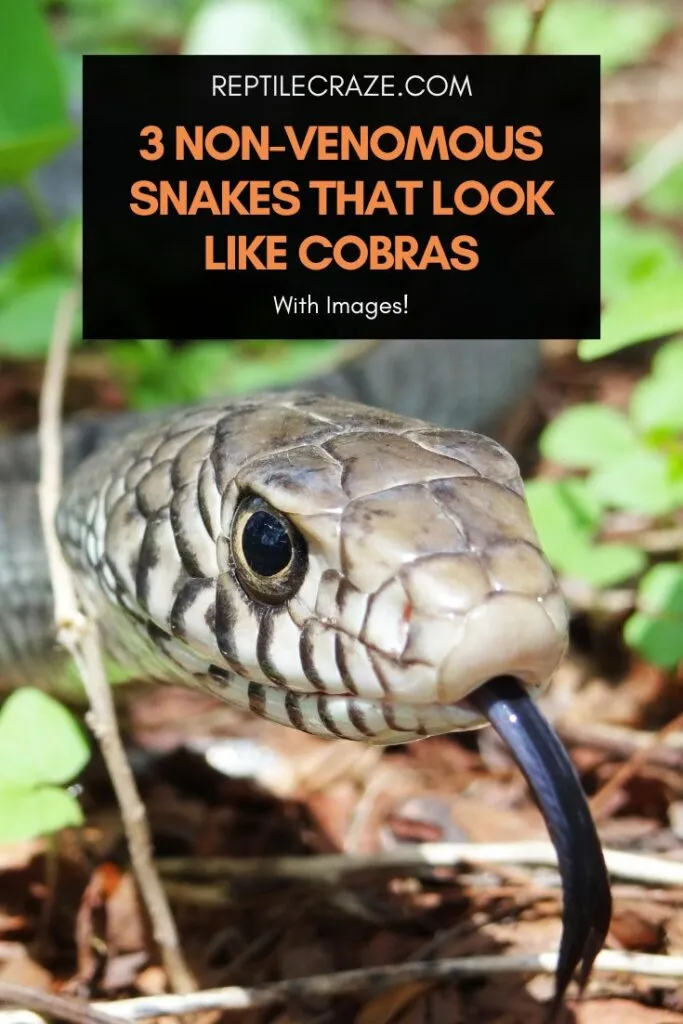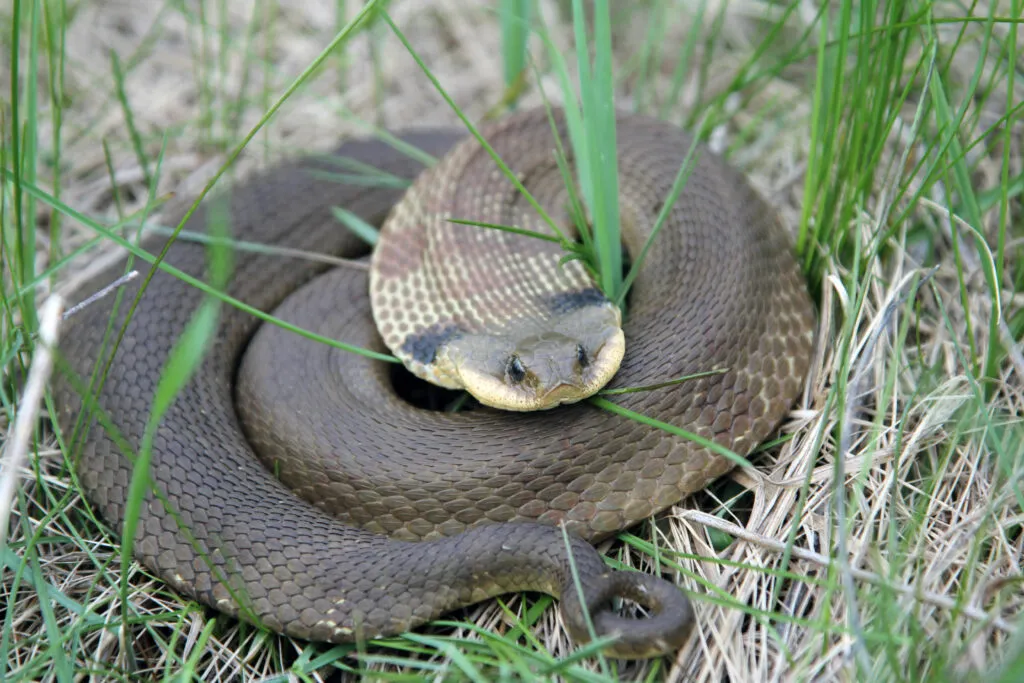
Venomous snakes can be particularly stylish due to all their evolutionary adaptations, but any good reptile enthusiast knows that it’s wise to keep away from these creatures—and that’s just what those adaptations are for!
The stance and hoods of cobras signal danger to potential predators, and we humans should be wary of those dangers as well. But do other non-venomous snakes share the cobra’s flashy features?
Some non-venomous snakes have evolved defensive features that mimic other venomous snakes, such as cobras, to deter predators and keep them safe. Here are some masters of mimicry that you can check out!
- Eastern hognose snake
- Oriental rat snake
- False water cobra
For more in-depth information on each of these snakes and their defensive behaviors, keep reading! I’ll discuss each of these snakes in more detail, going over their temperaments and cobra-like adaptations.
I’ll also detail what defines a cobra, as well as if any true cobras are non-venomous.
Table of Contents
Eastern Hognose Snake (Heterodon platirhinos)

What snakes have hoods like cobras? Well, The Eastern hognose is one of them! The Eastern hognose snake is sometimes also called the puff adder, hissing adder, spearhead, or blow snake.
Why does it have so many names? Well, it earns these nicknames due to its defensive behaviors when faced with a predator. In fact, many mistake these snakes for rattlesnakes or king cobras! However, hognose snakes are not venomous and are typically quite gentle and easy to handle.
The Easter hognose snake is a snake that flattens its head like a cobra, producing a hood.
If an Eastern hognose snake comes face to face with a predator, its first response is to flatten its head and neck while hissing loudly and throwing out some bluff strikes.
If these defensive tactics don’t work, the snake will roll over and stick its tongue out to play dead, similar to other types of hognose snake.
These snakes generally have thick bodies and grow to about 45 inches as adults. They come in a variety of colors and, like other hognose snakes, have upturned snouts.
In the wild, they prefer to eat toads. These snakes also rarely bite, despite the impressive defensive displays!
Oriental Rat Snake (Ptyas mucosa)

The oriental rat snake, also called the Indian rat snake, is a quick, territorial snake. They are also a good example of snakes that flare their neck!
Their native range overlaps with the king cobra, giving good perspective to this defensive strategy. These snakes live in wetlands, forests, farmland, rice paddies, and even suburban areas.
When the oriental rat snake feels threatened, it will inflate its neck and emit a low growling sound, likely to mimic the king cobra.
However, these snakes are not venomous and are pretty harmless! However, they will aggressively defend their territory in captivity, striking at passing objects.
A relative of the oriental rat snake, the arboreal rat snake, also exhibits this attitude and neck-flaring behavior.
In captivity, these snakes often act in an unpredictable manner, sometimes striking or biting handlers. This can be curbed over time, but be wary!
These snakes can grow fairly large—up to 6ft long! In fact, they are India’s second-largest snake. Even though they are quite long, oriental rat snakes typically have thin bodies.
False Water Cobra (Hydrodynastes gigas)

The false water cobra is another great example of snakes that flatten their body. The false water cobra can flatten its neck, though it typically remains in a horizontal position rather than rearing up to make a display.
In addition to this, it can also flatten other areas of its body, while a cobra cannot.
Why is it called the false water cobra? Well, this large South American snake can be mistaken for a cobra due to its neck-flattening displays.
However, it isn’t a true cobra, as it lacks the venomous power of the cobra namesake.
The false water cobra isn’t entirely non-venomous, as it does have a venom gland. Unlike the cobra, the false water cobra doesn’t have an apparatus to inject venom.
Instead, its fangs are at the back of its mouth, meaning it has to chew its prey to deliver venom.
Additionally, the small venom gland of the false water cobra is not associated with the salivary gland, meaning that the saliva of the snake is not toxic in itself.
As a method of defense, the false water cobra typically tries to bite threatening predators in a slashing motion in order to inflict a wound as opposed to inject venom.
Other types of “false cobra”, like the Egyptian false cobra and the Chinese false cobra, can also produce hoods like a cobra but are not considered true cobras.
These snakes are also both venomous. However, the Egyptian false cobra’s venom is generally considered non-lethal, while the venomous potential of the Chinese false cobra is currently unknown.
Just because false cobras aren’t very venomous doesn’t mean they aren’t dangerous! The bite of the Egyptian false cobra can reportedly cause excruciating pain, and these snakes are known to be quite aggressive.
Are there any non-venomous cobras?
No, there are no non-venomous cobras. The term “cobra” itself refers to a group of venomous snakes of the genus Naja and some others. The snakes within this genus are “true cobras”, but other snakes are still associated with the term, like the king cobra.
These snakes are grouped together by genetic relationships, as referenced above, but are also grouped based on behavior, adaptations, and appearance.
All known cobra snakes are venomous. Many cobras can produce a hood and rear upward when threatened by predators.
Because of their distinct features and dangerous venom, cobras are very well known throughout their native habitats!
As we’ve seen here, other non-venomous or less venomous snakes have adopted those same adaptations over time, mimicking the cobra to keep themselves safe.
Unfortunately, this mimicry can sometimes backfire for these snakes. Cobras are very dangerous and deadly, and humans won’t take a chance when they see a snake that resembles a cobra.
Sometimes, when these snakes are found in the wild and exhibit these defensive adaptations, humans will kill them because they think they’ve stumbled upon a cobra.
- Enchi Ball Python: A Unique and Stunning Morph of Python regius - March 27, 2025
- Emerald Tree Monitor: The Enigmatic Green Guardian of the Rainforest - March 26, 2025
- The Egyptian Cobra (Naja haje): A Fascinating Serpent - March 25, 2025
